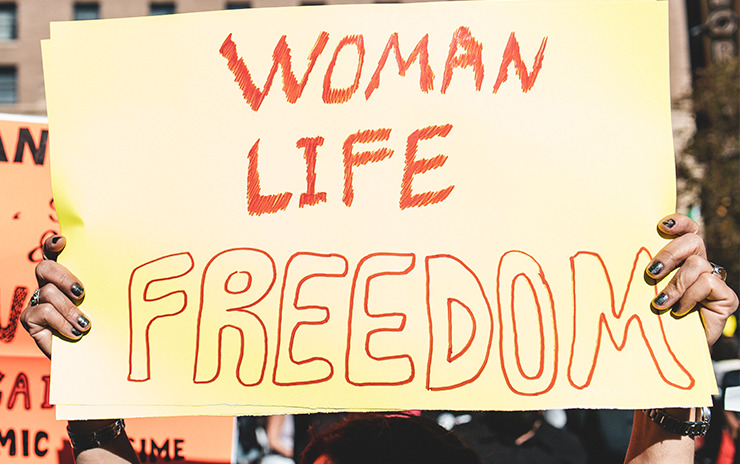At age 16-17, while I was struggling emotionally to get through high school, I had been the target of a bully for many months, which escalated nearing the end of my senior year. To add insult to injury, this bully was my best friend (or so I thought). This was during the 80s when there was no social media, cell phones, or other electronic/internet access to images. There only existed the daily experience with my peers, magazine pictures, commercials, television shows, etc.
As a result of the bullying, I developed very low self-esteem, low self-worth, which by the age of 18 manifested into an eating disorder. I was fortunate to receive treatment, counseling, and mentorship which played a significant role in my recovery. My parents were also very supportive throughout my recovery. I learned a great deal about myself in the process and was, in time, able to develop a strong sense of self, feeling confident enough to accept myself without comparing my perceived assets and/or shortfalls to others, or trying to achieve impossible standards.
I have been treating young children and teens for almost 18 years, and until about five years ago, much of what I was observing and hearing from my young clients was how they coped with peer pressure, family stressors, and high expectations of the self, very little of which was reported as a result of time spent on social medial platforms.
Since then, about 75% of the children and teens in my practice have acknowledged that they will compare themselves to others in their friend group on social media, or to a larger peer group, an influencer, or other famous person. I recently reviewed my young client cases from the past few years and have noticed that common behavior changes and problems have presented as low self-esteem in the forms of self-harm, body dysmorphic disorder, depression, suicidal ideation, increased isolation, increased angry outbursts, and severe anxiety.
The Royal Society for Public Health (2017) reports that 91% of 16-24 year olds use the internet for social media. They go on to discuss the impact of social media on self-esteem and body image. Mayer-Schönberger and Cukier (2013) conducted a study that indicated there are 10 million photographs being uploaded every hour, providing an almost endless potential for young women to be drawn into appearance-based comparisons whilst online.
The power of the peer group and social development
Reading just these limited data indicates the enormity of access and opportunity that older children and teens have to compare themselves to others. Rachel Ehmke, managing editor of the Child Mind Institute, points out that a crucial part of emotional development is for children and teens to get involved with something that boosts their self-esteem. She notes that when kids learn to feel good about what they can do, instead of how they look and what they own, they’re happier (Ehmke, 2022). Children and teens do feel the need to be part of something important and want to be valued by their peers. But how they perceive their value, if limited to only social media platform standards, can have a profound impact on their ability to obtain a healthy identity. Nangle, Erdley, Newman, Mason and Carpenter (2003) note that peer status captures whether a child or adolescent is accepted or rejected by their peers. This indicates that the desire to develop and identify self-worth through their peer group is highly valued in the young individual. Friendships are important to social development, as friends can provide support and understanding, as well as help to develop social competence, when established in healthy and authentic ways.
Throughout my years of working with young children and teens, it has become increasingly clear to me that social media activity has become a normal activity that often is the primary focus of their day. It also has become more common for parents to report to me that their child/teen becomes very irritable, angry, and uncooperative when parents attempt to set limits, or enforce those limits by shutting down the internet as a way of getting their child to comply. Dr. Kate Eshleman of the Cleveland Clinic states, “If kids are being asked to get off social media and do their homework, then parents might see increased periods of irritability or frustration directed toward parents. They’re being asked to do something they don’t want to do and stop doing something they enjoy” (Cleveland Clinic, 2021, para. 11). I can relate to this statement through my professional experience, and my teen clients share that they sometimes aren’t even aware that their parent is trying to get their attention because they are so engrossed in their social media world. This irritability is exacerbated by a particular activity that they might be right in the middle of—either posting something about themselves or anxiously awaiting immediate feedback from others in order to make them feel good about themselves. A parent interruption during this process can be very upsetting to a teen or older child if they become dependent on this type of feedback to determine their self-worth.

On a more positive note, most recently, a few of my teen clients have been able to recognize some of the negative impact on their mental health, and a few of them have recognized that they have become dependent on their cyber peers’ positive feedback to identify their self-worth. This may provide some hope for parents and therapists when engaging in such dialogue with older children and teens. I have observed through my years of work that teens and older children often feel empowered when they are able to initiate change for themselves and see positive outcomes as a result. This process can begin to help them develop more meaningful and genuine self-worth and self-esteem. Helping them learn to set limits for themselves, while providing coping tools for increased anxiety and stress while in this process, has been extremely beneficial.
As therapists, we know the challenges for parents when they are in competition with the presence and influence of social media in the life of their child. While supporting and guiding parents as they try to cope with this reality, I have also learned that making changes in how and when their children use social media needs to be a family goal, not just one that is being asked of their child. Finding ways to present this idea in a manner that is manageable and reasonable for others can be a challenge, but I have found that when parents and children work together to compromise, when there is consistency and follow through, this has helped to decrease isolation, increase child involvement in family activities, and has increased the child’s willingness to seek validation and self-esteem through other healthy activities, which in turn may increase their chances for success. Try working with parents on connecting with their community, finding resources and available/affordable social activities for their children. This is beneficial for parents, not only to reassure them that their child is engaging in a positive activity, but also for children and teens to find fulfilling and genuine face-to-face interactive experiences that contribute to healthy, social development.
This article is offered free by AAMFT. If you are interested in accessing members-only content, join today!
Throughout my years of working with young children and teens, it has become increasingly clear to me that social media activity has become a normal activity that often is the primary focus of their day.

Katharine Larson, MA, LMFT, practices full time as a clinician working with children, teens, families and couples at Generations Family Health Center in Willimantic, CT. She is an AAMFT Professional Member holding the Clinical Fellow designation.
REFERENCES
Cleveland Clinic. (2021). Effects of social media on children. Retrieved from https://health.clevelandclinic.org/dangers-of-social-media-for-youth
Ehmke, R. (2022). How social media affects teenagers. Child Mind Institute. Retrieved from https://childmind.org/article/how-using-social-media-affects-teenagers
Mayer-Schönberger, V., & Cukier, K. (2013). Big data: A revolution that will transform how we live, work and think. New York: Houghton Mifflin Harcourt Publishing Company.
Nangle, D. W., Erdley, C. A., Newman, J. E., Mason, C. A., & Carpenter, E. M. (2003). Popularity, friendship quantity, and friendship quality: Interactive influences on children’s loneliness and depression. Journal of Clinical Child and Adolescent Psychology, 32(4), 546.
Royal Society for Public Health. (2017). Status of mind: Social media and young people’s mental health and wellbeing. Retrieved from https://www.rsph.org.uk/static/uploaded/d125b27c-0b62-41c5-a2c0155a8887cd01.pdf
Other articles
Cyber Abuse
When we pause to think about all the many affordances our internet infrastructure and technologically connected world lends us, it’s easy to recognize at least a handful of ways our lives have been made easier. Apps like Venmo and CashApp allow us the convenience of immediately paying a friend back who just paid for our coffee, and location sharing gives us the ability to instantly know whether the Uber your little sister got into took her straight home.
Morgan Lancaster Strickland, PhD
Cyberbullying and Online Gaming
Cyberbullying is bullying that takes place over digital devices like cell phones, computers, and tablets. Cyberbullying can occur through SMS, text, and apps, or online in social media, forums, or gaming where people can view, participate in, or share content. Cyberbullying includes sending, posting, or sharing negative, harmful, false, or mean content about someone else. It can include sharing personal or private information about someone else causing embarrassment or humiliation. Some cyberbullying crosses the line into unlawful or criminal behavior.
An Iranian Therapist’s Reflection: A Revolution has Begun, Inspired by Decades of Oppression, Led with Courage and Determination by the Women of Iran
I was born in Iran, and at the age of 10, my family and I absconded from multi-systemic injustices and immigrated to the US in hopes of extended opportunities and freedom. I was about three years old when the Islamic Republic overthrew the Shah of Iran and the Iran-Iraq War started.
Bahareh Sahebi, PysD





